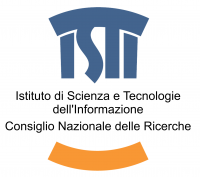Michael Maerker, Christine Hertler, Iza Romanowska
Archaeology has largely moved forward from the simplistic ‘dots-on-the-map’ and ‘arrows-on-the-map’ approaches when it comes to studying large-scale human movements. Current models regarding spatio-temporal distribution and migration of humans often highlight the complex nature of such phenomena and the limitations that any particular data type impose on the reconstruction, be it environmental (paleoclimate, paleotopography, paleofauna and -flora), archaeological (site distribution, patterns in material culture) and other types of data (genetics, isotopes etc). Similarly the, often very coarse, resolution of the data coupled with the difficulty of integrating different types of information within one framework make the task of researching large-scale human dispersal challenging. Nevertheless, a number of recent applications employing different computational techniques show that this can be achieved. From the data acquisition, cataloguing and storing, to spatial analysis and identifying patterns and distributions in the data to building abstract and semi-realistic simulations of the processes behind the dispersals, computational techniques can aid the process of investigating human movement on various scales and allow researchers to tackle the underlying complexity of the studied systems moving the debate beyond simple intuitive models.
This session aims to summarise the recent progress in the topic, discuss major challenges and provide a base for establishing further directions of research. We invite contributions from researchers studying human movements on the meso- and macro-scale and employing any of the wide variety of techniques and theoretical frameworks within the following three themes:
DATA: spatio-temporal data acquisition and integration (for example, data types, quantifying uncertainty and biases of the data, large-scale databases, cross-platform integration);
PATTERN: spatio-temporal analysis and modelling (statistical modelling, GIS, C14 among others);
PROCESS: modelling of processes and mechanisms underpinning dispersal through simulation (agent-based and equation-based modelling, cellular automata, system-dynamics modelling, (social) network theory) and other techniques.


